-
 Bitcoin
Bitcoin $108,165.4587
0.78% -
 Ethereum
Ethereum $2,456.3517
1.15% -
 Tether USDt
Tether USDt $1.0003
0.00% -
 XRP
XRP $2.1934
0.05% -
 BNB
BNB $650.0935
0.52% -
 Solana
Solana $151.3905
2.69% -
 USDC
USDC $0.9998
0.00% -
 TRON
TRON $0.2751
-0.32% -
 Dogecoin
Dogecoin $0.1640
0.87% -
 Cardano
Cardano $0.5631
0.57% -
 Hyperliquid
Hyperliquid $38.7115
4.69% -
 Bitcoin Cash
Bitcoin Cash $493.1868
-0.39% -
 Sui
Sui $2.8217
3.61% -
 Chainlink
Chainlink $13.3994
2.08% -
 UNUS SED LEO
UNUS SED LEO $9.1632
0.94% -
 Avalanche
Avalanche $18.0318
1.97% -
 Stellar
Stellar $0.2388
0.35% -
 Toncoin
Toncoin $2.8763
1.41% -
 Shiba Inu
Shiba Inu $0.0...01160
1.59% -
 Litecoin
Litecoin $86.6393
1.29% -
 Hedera
Hedera $0.1485
0.16% -
 Monero
Monero $315.7948
1.56% -
 Polkadot
Polkadot $3.4240
1.88% -
 Bitget Token
Bitget Token $4.6314
-0.44% -
 Dai
Dai $0.9998
-0.01% -
 Ethena USDe
Ethena USDe $1.0002
-0.01% -
 Uniswap
Uniswap $7.2110
2.59% -
 Aave
Aave $270.6087
6.07% -
 Pi
Pi $0.5350
0.52% -
 Pepe
Pepe $0.0...09545
1.26%
How to make money on currency exchange
By carefully selecting a reputable cryptocurrency exchange, implementing risk management techniques, and exploring advanced trading strategies, you can increase your chances of profitability and minimize potential losses.
Jan 08, 2025 at 05:08 pm
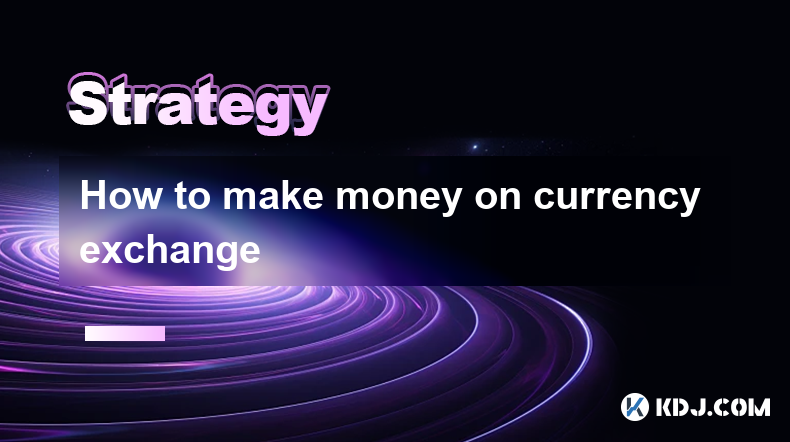
Key Points of the Article:
- Understanding Cryptocurrency Exchanges
- Choosing a Reputable Exchange
- Signing Up and Funding Your Account
- Understanding the Different Types of Orders
- Placing Your First Trade
- Tips for Managing Risk
- Advanced Trading Strategies
How to Make Money on Currency Exchange
1. Understanding Cryptocurrency Exchanges
Cryptocurrency exchanges are online marketplaces where users can buy, sell, and trade cryptocurrencies. They act as intermediaries between buyers and sellers, facilitating transactions in a secure and efficient manner. There are numerous exchanges available, each with its own features, fees, and supported currencies.
2. Choosing a Reputable Exchange
Selecting a reliable exchange is crucial for the security of your funds and the overall success of your trading endeavors. Consider the following factors when choosing an exchange:
- Reputation: Check online reviews, testimonials, and third-party evaluations to assess the exchange's trustworthiness and reliability.
- Security: Ensure the exchange employs strong security measures to protect your personal data and assets from cyber threats. Look for features such as two-factor authentication, cold storage, and SSL encryption.
- Fees: Compare the fees charged by different exchanges. Consider both trading fees and deposit/withdrawal fees to find the most cost-effective option.
- Supported Currencies: Determine whether the exchange supports the cryptocurrencies you wish to trade.
3. Signing Up and Funding Your Account
Once you have chosen an exchange, create an account by providing your personal information and setting up a password. Complete the verification process to activate your account.
To fund your account, you can deposit fiat currency (e.g., USD, EUR) or cryptocurrency. Fiat deposits can be made via bank transfer, credit/debit card, or third-party payment processors. Cryptocurrency deposits require you to send tokens from your external wallet to the exchange's address.
4. Understanding the Different Types of Orders
Exchanges offer various types of orders that allow you to customize your trades. The most common orders include:
- Market Order: Executes instantly at the current market price.
- Limit Order: Specifies a specific price at which you want to buy or sell an asset.
- Stop Order: Triggered when the market price reaches a predefined level, typically used to limit losses or secure profits.
- Trailing Stop Order: A dynamic stop order that follows the asset's price as it moves in a favorable direction.
5. Placing Your First Trade
To place a trade, navigate to the trading page of your chosen exchange and select the currency pair you wish to trade. Choose the type of order, specify the amount and price (if applicable), and click "Buy" or "Sell." Your order will be executed and the funds will be credited or debited from your account.
6. Tips for Managing Risk
- Set a Trading Plan: Establish clear guidelines and strategies to avoid impulsive or emotional trading.
- Use Stop-Loss Orders: Protect your profits by setting stop orders that automatically close positions when the market price moves against you.
- Diversify Your Portfolio: Spread your assets across multiple cryptocurrencies to reduce risk.
- Avoid Leverage: Trading with leverage (borrowing funds to increase the size of your positions) can amplify both profits and losses.
- Manage Your Emotions: Stay calm and disciplined during market fluctuations to avoid irrational trading decisions.
7. Advanced Trading Strategies
Once you gain experience, you can explore advanced trading strategies for potential higher returns. These strategies include:
- Margin Trading: Borrow funds from the exchange to magnify your profits, but be aware of the risks involved.
- Technical Analysis: Use charting tools and technical indicators to analyze price patterns and identify trading opportunities.
- Arbitrage: Take advantage of price differences between exchanges or between different cryptocurrencies.
- Automated Trading: Use software or bots to execute trades based on pre-defined parameters.
FAQs
- What is the easiest way to make money on cryptocurrency?
Answer: The easiest way is through simple buy-and-hold investing, where you purchase a cryptocurrency and hold it for appreciation. - Is it possible to lose money on cryptocurrency exchange?
Answer: Yes, trading cryptocurrencies involves risk and the value of assets can fluctuate significantly. - How much money can I make from currency exchange?
Answer: The potential returns vary depending on market conditions, the specific cryptocurrencies traded, and the risk tolerance of the individual.
Disclaimer:info@kdj.com
The information provided is not trading advice. kdj.com does not assume any responsibility for any investments made based on the information provided in this article. Cryptocurrencies are highly volatile and it is highly recommended that you invest with caution after thorough research!
If you believe that the content used on this website infringes your copyright, please contact us immediately (info@kdj.com) and we will delete it promptly.
- South Korea, Crypto, and Global Markets: Riding the Digital Wave to New Highs
- 2025-06-29 20:50:12
- Bitcoin Eyes $108K: Will Trump's Nod Push BTC to a New All-Time High?
- 2025-06-29 21:10:12
- Pengu Pumps: Bullish Flags and Whale Wallets Fuel the Fire!
- 2025-06-29 21:10:12
- XRP to $20,000? Crypto Developers Eyeing Ripple's Potential
- 2025-06-29 21:15:12
- Sui's DeFi Lending Landscape: Suilend Leading the Charge
- 2025-06-29 21:30:12
- Bitcoin Whale Goes Long: Will the Bitcoin Price Follow?
- 2025-06-29 21:30:12
Related knowledge

What are the skills of Bitcoin option hedging? Practical case sharing
Jun 24,2025 at 04:01pm
Understanding Bitcoin Option HedgingBitcoin option hedging is a risk management strategy used by traders and investors to protect their positions in the volatile cryptocurrency market. By using options, individuals can limit potential losses while retaining the opportunity for profit. In essence, it allows one to insulate against adverse price movements...
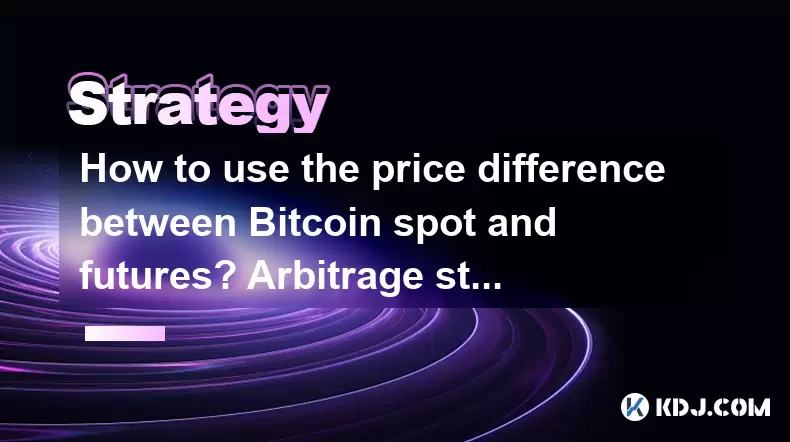
How to use the price difference between Bitcoin spot and futures? Arbitrage strategy
Jun 20,2025 at 02:56pm
Understanding Bitcoin Spot and Futures MarketsTo effectively leverage arbitrage opportunities between Bitcoin spot and futures markets, it's essential to understand the fundamental differences between these two types of markets. The spot market refers to the direct buying and selling of Bitcoin for immediate delivery at the current market price. In cont...
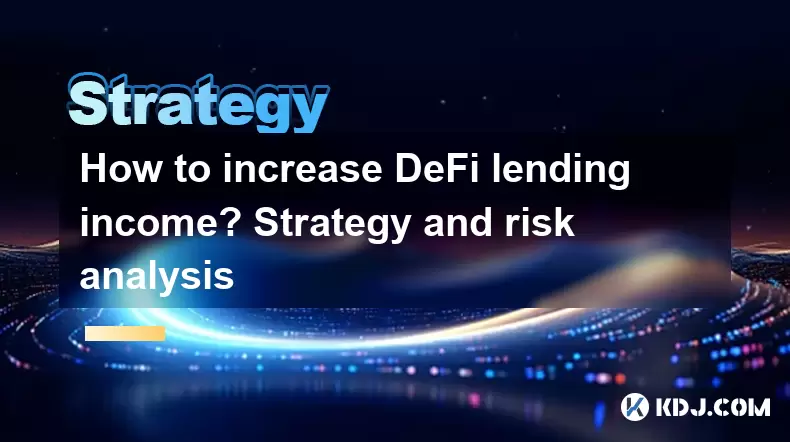
How to increase DeFi lending income? Strategy and risk analysis
Jun 24,2025 at 02:08pm
Understanding DeFi Lending and Its Income PotentialDeFi (Decentralized Finance) lending has emerged as a popular way to earn passive income in the cryptocurrency space. Unlike traditional banking systems, DeFi lending platforms allow users to lend their crypto assets directly to borrowers without intermediaries. The lenders earn interest based on the su...
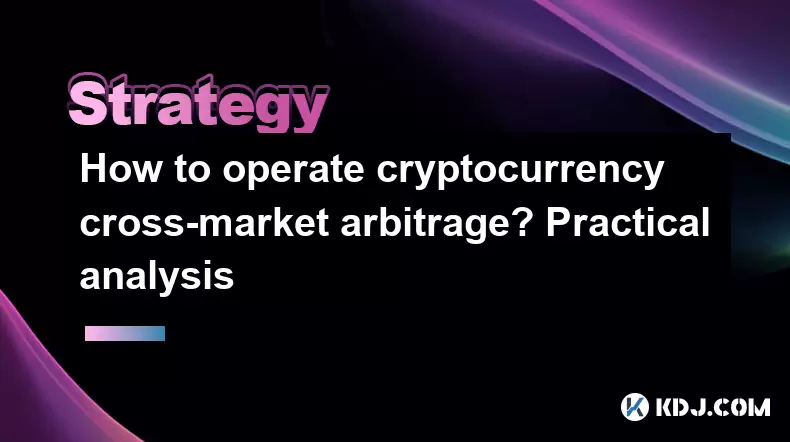
How to operate cryptocurrency cross-market arbitrage? Practical analysis
Jun 23,2025 at 04:01am
Understanding Cryptocurrency Cross-Market ArbitrageCryptocurrency cross-market arbitrage involves taking advantage of price differences for the same digital asset across different exchanges. The core idea is to buy low on one exchange and sell high on another, capturing the profit from the discrepancy. This strategy relies heavily on real-time market da...

How to make profits from high-frequency cryptocurrency trading? Sharing core skills
Jun 19,2025 at 05:07pm
Understanding High-Frequency Cryptocurrency TradingHigh-frequency trading (HFT) in the cryptocurrency market involves executing a large number of trades at extremely fast speeds, often within milliseconds. This method relies on small price discrepancies across exchanges or within a single exchange’s order book. Traders use complex algorithms and ultra-l...
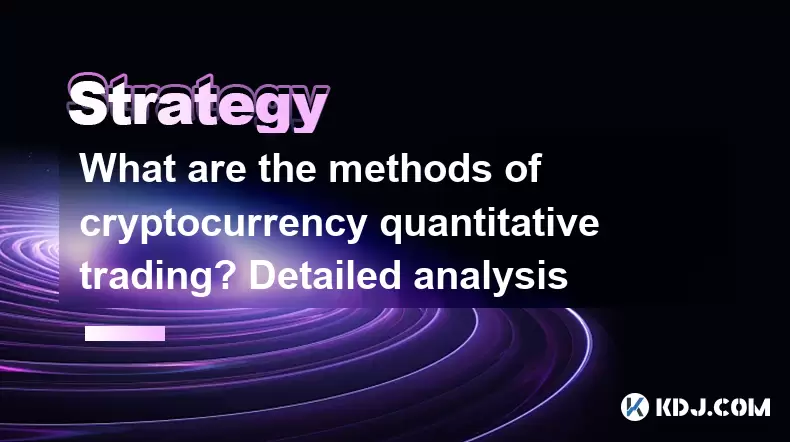
What are the methods of cryptocurrency quantitative trading? Detailed analysis
Jun 22,2025 at 11:07pm
Understanding the Core of Cryptocurrency Quantitative TradingCryptocurrency quantitative trading refers to the use of mathematical models and algorithms to execute trades in the digital asset market. Unlike traditional discretionary trading, which relies heavily on human judgment, quantitative trading leverages data-driven strategies to identify profita...

What are the skills of Bitcoin option hedging? Practical case sharing
Jun 24,2025 at 04:01pm
Understanding Bitcoin Option HedgingBitcoin option hedging is a risk management strategy used by traders and investors to protect their positions in the volatile cryptocurrency market. By using options, individuals can limit potential losses while retaining the opportunity for profit. In essence, it allows one to insulate against adverse price movements...

How to use the price difference between Bitcoin spot and futures? Arbitrage strategy
Jun 20,2025 at 02:56pm
Understanding Bitcoin Spot and Futures MarketsTo effectively leverage arbitrage opportunities between Bitcoin spot and futures markets, it's essential to understand the fundamental differences between these two types of markets. The spot market refers to the direct buying and selling of Bitcoin for immediate delivery at the current market price. In cont...

How to increase DeFi lending income? Strategy and risk analysis
Jun 24,2025 at 02:08pm
Understanding DeFi Lending and Its Income PotentialDeFi (Decentralized Finance) lending has emerged as a popular way to earn passive income in the cryptocurrency space. Unlike traditional banking systems, DeFi lending platforms allow users to lend their crypto assets directly to borrowers without intermediaries. The lenders earn interest based on the su...

How to operate cryptocurrency cross-market arbitrage? Practical analysis
Jun 23,2025 at 04:01am
Understanding Cryptocurrency Cross-Market ArbitrageCryptocurrency cross-market arbitrage involves taking advantage of price differences for the same digital asset across different exchanges. The core idea is to buy low on one exchange and sell high on another, capturing the profit from the discrepancy. This strategy relies heavily on real-time market da...

How to make profits from high-frequency cryptocurrency trading? Sharing core skills
Jun 19,2025 at 05:07pm
Understanding High-Frequency Cryptocurrency TradingHigh-frequency trading (HFT) in the cryptocurrency market involves executing a large number of trades at extremely fast speeds, often within milliseconds. This method relies on small price discrepancies across exchanges or within a single exchange’s order book. Traders use complex algorithms and ultra-l...

What are the methods of cryptocurrency quantitative trading? Detailed analysis
Jun 22,2025 at 11:07pm
Understanding the Core of Cryptocurrency Quantitative TradingCryptocurrency quantitative trading refers to the use of mathematical models and algorithms to execute trades in the digital asset market. Unlike traditional discretionary trading, which relies heavily on human judgment, quantitative trading leverages data-driven strategies to identify profita...
See all articles

























































































